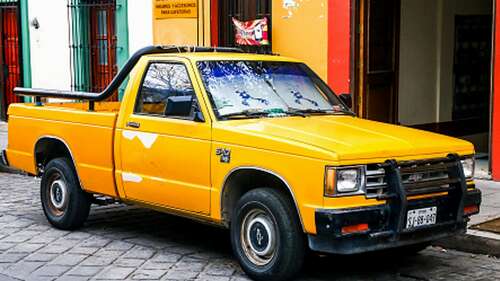
In 1978, Chevrolet released the 90-degree V6 engine as a scaled-down version of its small block V8. At 200 cubic inches of displacement (CID) or 3.3 liters, this V6 was nearly identical to the iconic Chevy small block V8. It featured a similar block design and much of the same hardware, including motor mounts. The 90-degree V6 displacement increased to 229 CID over the next few years before settling into its final form of 4.3 liters and 262 CID in 1985.
As a younger sibling to the small block V8, the Vortec 4.3 featured the same cylinder bore and stroke as the famous 350. That means the V6 could use many of the same components as the bigger motor, including pistons, main and camshaft bearings, timing cover, oil pump, and valvetrain components. The 4.3L V6 motor was the first to be called a Vortec engine. At this time, Chevy was developing its vortex technology, a proprietary method of mixing air and fuel in the combustion chamber. The 4.3L V6 became the first and longest-lasting of the Vortec lineup.
In the years that followed, the Vortec 4.3 saw several changes. Upon its release, the 4.3L V6 was available as a carburated motor capable of 155 horsepower and 230 lb-ft of torque. A throttle body fuel-injected version capable of 130 horsepower was also available in some large cars, like the Monte Carlo coupe and the Pontiac Grand Prix. But the Vortec 4300 evolved quickly. Over the next few years, several small changes — including a balance shaft to reduce unwanted shaking, multi-port fuel injection, and full OBDII compliance — transformed the 4.3L V6 into a modern engine capable of a modest 195 to 200 horsepower.

